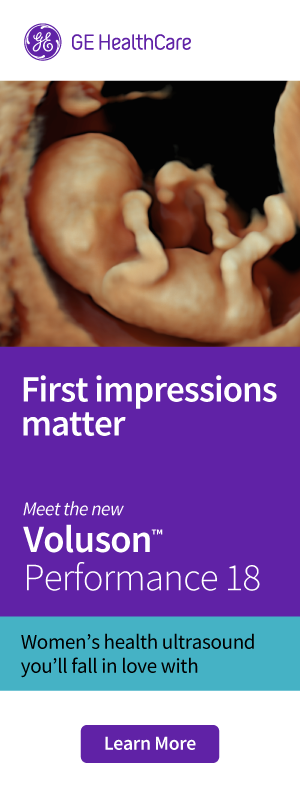RANZCOG is dedicated to the establishment of high standards of practice in obstetrics and gynaecology and women’s health. As outlined in the College’s Strategic Plan, RANZCOG continues to publish and update its evidence based clinical guidelines to raise standards and support the O&G workforce in delivering high quality patient care, based on the latest research and evidence.
Evidence-based clinical guidelines are central to the delivery of high value health care. RANZCOG guidelines follow the process described in the RANZCOG Handbook with robust evidence appraisal systems using the Grading of Recommendations, Assessment, Development and Evaluations (GRADE) approach. The College has a strong history of producing high-quality clinical guidance and maintains a growing portfolio of clinical guidelines and supporting resources for use by both medical practitioners and consumers.
For each clinical questions, the GRADE of evidence informs the Evidence to Decision (EtD) framework which reviews seven domains:
- Benefits and harms
- Certainty of the evidence
- Values and preferences
- Resources
- Equity
- Acceptability
- Feasibility
Each clinical guideline includes two forms of guidance:
- Recommendations, which are evidence-based and graded
- Good Practice Statements, which provide practical advice and information based on clinical opinion and expertise
All recommendations are presented with a background of the clinical question, a rationale for the recommendation, any relevant considerations (such as limited evidence), and identification of research gaps.
As a medical college, RANZCOG is well placed to continue to develop the most reliable evidence-based clinical guidelines.
Endometriosis
Endometriosis is a chronic, inflammatory, gynaecologic disease marked by the presence of endometrial-like tissue outside the uterus and it afflicts as many as 1 in 7 women and people assigned female at birth in Australia.
For many, endometriosis is associated with debilitating pain, significant diagnostic delays after symptom onset, and the persistence or recurrence of symptoms despite optimal medical and surgical treatments.
The Australian Living Evidence Guideline: Endometriosis
RANZCOG developed the first Australian clinical practice guideline for the diagnosis and management of endometriosis in 2021, as part of the Australian Government’s overarching National Action Plan for Endometriosis (2018). This plan focuses on three priority areas: awareness and education, clinical management and care, and research.
In 2022, the Australian Government invited RANZCOG to update the original (Foundation) Guideline and transition it into a living evidence format (Living Guideline). The resulting Australian Living Evidence Guideline: Endometriosis incorporated a complete update of the evidence for all the clinical questions from the Foundation Guideline.
The Living Guideline also updated all recommendations with standardised wording using GRADE methodology. Each Recommendation or Good Practice Statement now reflects the strength of the recommendation in relation to the certainty of the evidence.
The Living Guideline includes:
- 9 Strong Recommendations
- 29 Conditional Recommendations
- 40 Good Practice Statements
Launched in May 2025, the Living Guideline has already successfully raised awareness of endometriosis and highlighted the importance of early recognition of symptoms with the options for early diagnosis and management.
Why is it called a living guideline?
A living guideline is continuously updated to incorporate the latest, high-certainty evidence as it becomes available. For the Australian Living Evidence Guideline: Endometriosis, systematic literature searches were repeated in January 2025 and April 2025. Hundreds of new papers were identified and screened to determine whether any new evidence would lead to a change in existing recommendations.
Box 1: Example of living evidence
| Diagnosis of endometriosis January 2025 Search:
April 2025 Search:
Outcome: Recommendation did not change. |
Highlights from the Australian Living Evidence Guideline: Endometriosis include:
Signs and Symptoms of Endometriosis:
The most common symptoms associated with endometriosis are severe painful periods, pain with sex, infertility, pelvic pain or heavy menstrual bleeding.
First-Line Diagnosis of Endometriosis:
Patients with symptoms suggestive of endometriosis should be offered a transvaginal pelvic ultrasound as the first-line investigation. A pelvic MRI can be offered if ultrasound is not available, or if deep endometriosis is suspected. If transvaginal ultrasound is not possible or not appropriate, due to age or sexual history, and MRI is not available, a transabdominal ultrasound could be suggested. Surgery is not required as a first-line option to diagnose endometriosis.
First- and Second-Line Hormonal Treatment for Endometriosis:
Offer any of the first-line hormonal treatments, including combined oral contraceptives and progestogens (oral, injection, implant or IUD), and if there is no improvement after three months, discuss an alternative first-or second-line hormonal treatment (GnRH agonist or GnRH antagonist).
Treatment:
Explain findings of diagnostic imaging and offer first-line hormonal treatment. Consider additional interventions including analgesics, physiotherapy or psychological interventions.
Adolescents:
For young people with significant period pain, ultrasound should be used to assess causes including endometriosis. Use transabdominal ultrasound when transvaginal ultrasound is not suitable. MRI or transperineal ultrasound also may be considered by a specialist experienced in these modalities.
All hormonal and simple analgesic options are suitable for young people. IUD is safe to use in young people and may be inserted under general anaesthetic (if necessary). Other management as outlined in this guideline may also be suitable for young people.
Guidance for Cancer Risk:
For people with endometriosis requesting information about cancer risk in reproductive organs, it is recommended to inform them that although they may have a small increase in ovarian and endometrial cancer, the increase in absolute risk compared with women in the general population is low; and that they may have a reduced risk of cervical cancer.
As there is no screening test that can accurately detect early ovarian or endometrial cancer, the Guideline Development Group (GDG) does not recommend additional testing for people with endometriosis.
Resources to support the Australian Living Evidence Guideline: Endometriosis:
- Summary of Diagnosis and Management Flowchart
- Quick Reference Guide for Primary Care
- RANZCOG eLearning Advanced Training Module
- Consumer Patient Information Pamphlet (PIP)
- Consumer Video Resources
- Video 1: You are not alone
- Video 2: How was the guideline developed?
- RATE tool
Dissemination Events:
- Launch at the RANZCOG Education and Engagement Day, Melbourne, 10 May 2025
- World Congress on Endometriosis, Sydney, 21 May 2025
- RANZCOG Education and Engagement Day, Cairns, 28 June 2025
- RANZCOG Education and Engagement Day, Perth, 29 August 2025
- RANZCOG Annual Scientific Meeting (ASM), Adelaide, 18 -22 October 2025,
- Affiliate college booths and events including Royal Australian College of General Practitioners (RACGP) and Australian College of Rural and Remote Medicine (ACRRM)
- Clinical Champions from the GDG presenting to their local audiences including hospital or primary health network (PHN)
Update of Living Guideline Recommendations:
Recommendations and Good Practice Points will be updated according to the process described in the RANZCOG Handbook.
Australian Living Evidence Guideline: Endometriosis – Guideline and Resources







Leave a Reply